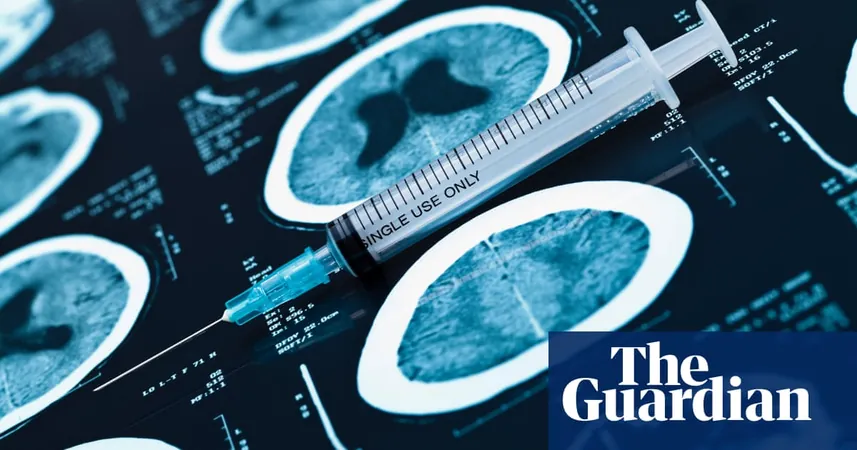
Astronauts Face Tough Journey Back to Earth After Extended Space Mission: What It Takes to Readjust!
2025-03-27
Author: Ting
The Impact of Prolonged Space Travel
Extended missions in the vastness of space come with unique physiological challenges. In the microgravity environment of the ISS, astronauts' bodies undergo changes that can be startling when they return home. Initially designed for an eight-day stint, Wilmore and Williams's mission was unexpectedly prolonged due to technical issues, compounding the challenges they will face during readjustment.
Fluid Redistribution
In microgravity, bodily fluids shift disproportionately, gathering in the upper body and head rather than settling down towards the feet. This alteration leads to a variety of issues, including difficulties with basic movements like walking. Vinay Gupta, a pneumologist and Air Force veteran, emphasizes that initially, the astronauts might find moving around challenging as their bodies readapt to Earth’s gravitational pull.
Bone Density Loss
Another grave concern for astronauts is the loss of bone density. In space, bones lose minerals at an alarming rate, akin to how individuals experience osteoporosis, but this occurs at a much faster pace in space. As a result, returning astronauts may encounter a heightened risk of fractures, necessitating extensive rehabilitation efforts to regain bone strength.
Muscle Atrophy: Recovery Timeline Ahead
The most observable effect of prolonged spaceflight is muscle atrophy. Muscles weaken considerably without the gravitational resistance encountered on Earth. Wilmore and Williams are anticipated to undergo a rigorous rehabilitation program for about 45 days to regain their strength and mobility. Initially, rehabilitation will focus on basic movements, particularly walking exercises aimed at enhancing flexibility and rebuilding muscle strength. In the early days of recovery, they will likely struggle to walk unassisted.
The Readjustment to Earth’s Gravity
The human body comprises fluids—mainly blood, lymph, and water—that typically flow in accordance with Earth’s gravitational force. When astronauts return, their bodies must readjust to this reality. With the cardiovascular system adapting to microgravity, they now need to recalibrate to pumping blood against gravity. This adjustment often results in dizziness, lightheadedness, and balance issues. Some astronauts have even reported feeling symptoms similar to extreme motion sickness as they reacquaint themselves with the forces of Earth.
Immune System and Potential Long-term Effects
The implications of extended space missions extend beyond physical health. Research suggests that microgravity and exposure to radiation can dampen immune system responses, rendering astronauts more susceptible to infections when they return to Earth’s biologically diverse environment.
Looking at the long term, studies of astronauts have hinted at potential health concerns that could emerge from extended spaceflight. These include implications on vision, neurological functions, and even genetic adjustments. Monitoring the post-mission health of astronauts like Wilmore and Williams serves a significant purpose, especially as preparations are made for future missions to Mars, where human presence is becoming increasingly feasible with recent findings of thermal water on the red planet.
Conclusion
As Wilmore and Williams take their first steps back into the terrestrial world, they face numerous hurdles, yet medical experts remain optimistic about their eventual full recovery within a few weeks. Their experiences not only underscore the remarkable adaptability of the human body but also shed light on the incredible challenges posed by the cosmos. Human exploration of space is not just about reaching new horizons; it’s about understanding how to bring the explorers back safely and healthily.



 Brasil (PT)
Brasil (PT)
 Canada (EN)
Canada (EN)
 Chile (ES)
Chile (ES)
 Česko (CS)
Česko (CS)
 대한민국 (KO)
대한민국 (KO)
 España (ES)
España (ES)
 France (FR)
France (FR)
 Hong Kong (EN)
Hong Kong (EN)
 Italia (IT)
Italia (IT)
 日本 (JA)
日本 (JA)
 Magyarország (HU)
Magyarország (HU)
 Norge (NO)
Norge (NO)
 Polska (PL)
Polska (PL)
 Schweiz (DE)
Schweiz (DE)
 Singapore (EN)
Singapore (EN)
 Sverige (SV)
Sverige (SV)
 Suomi (FI)
Suomi (FI)
 Türkiye (TR)
Türkiye (TR)
 الإمارات العربية المتحدة (AR)
الإمارات العربية المتحدة (AR)